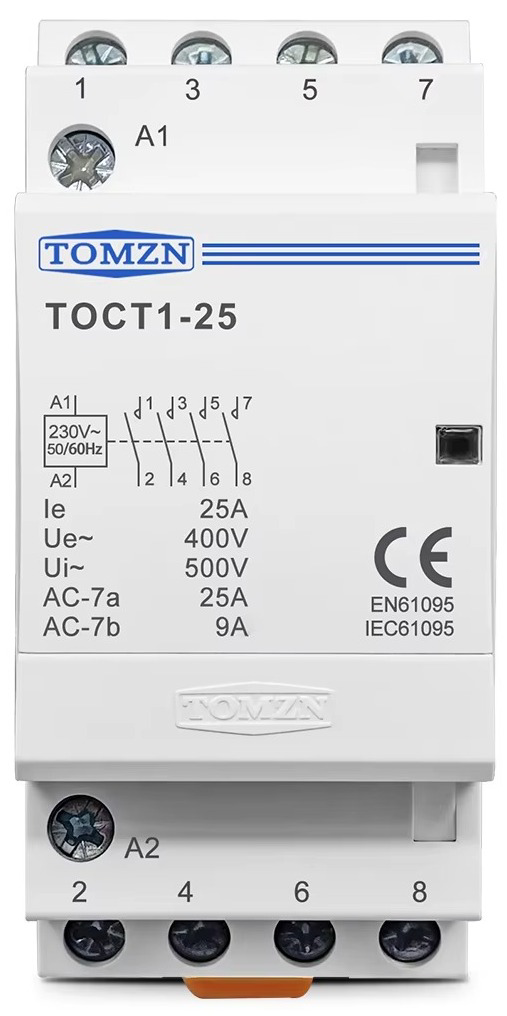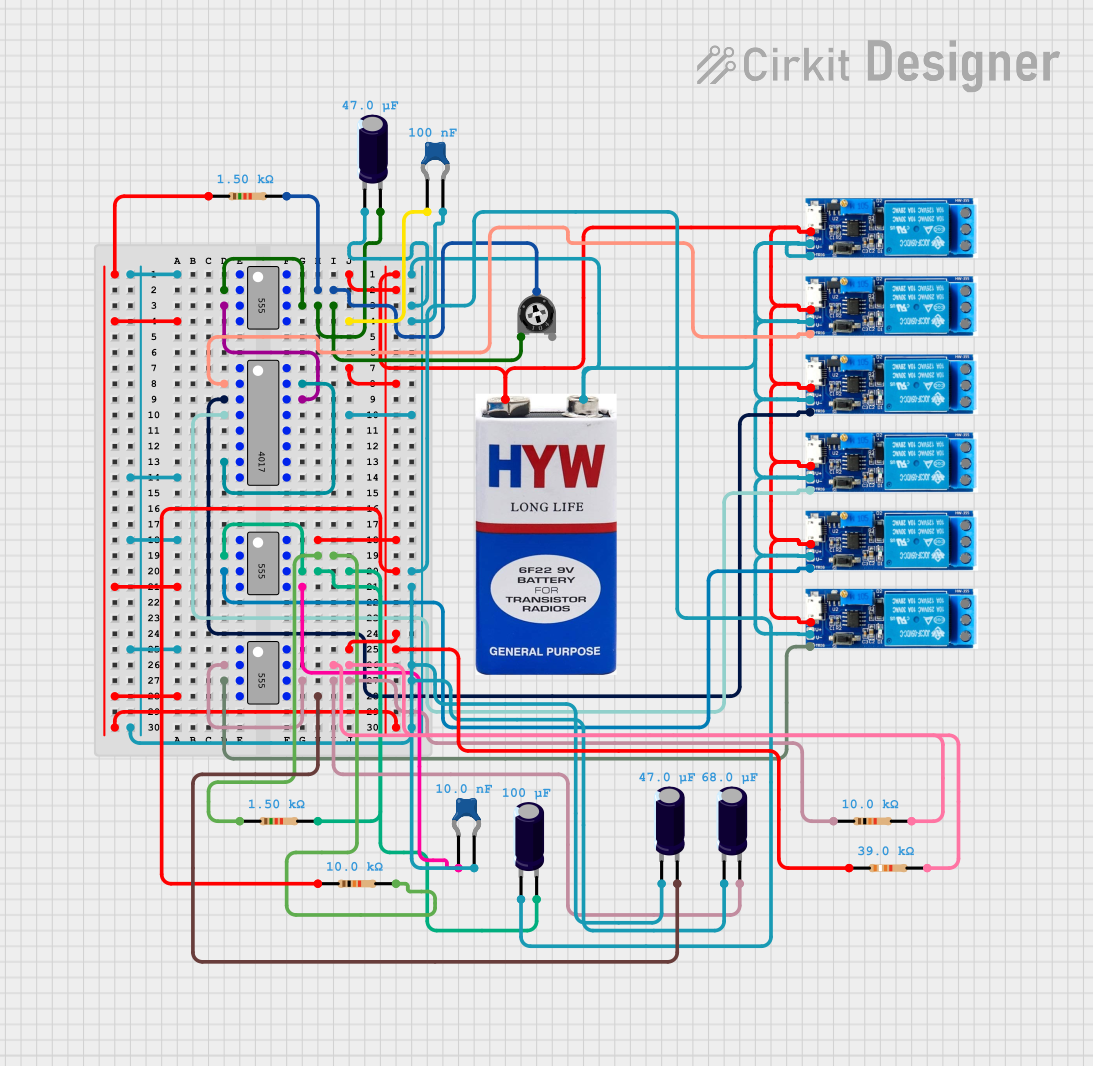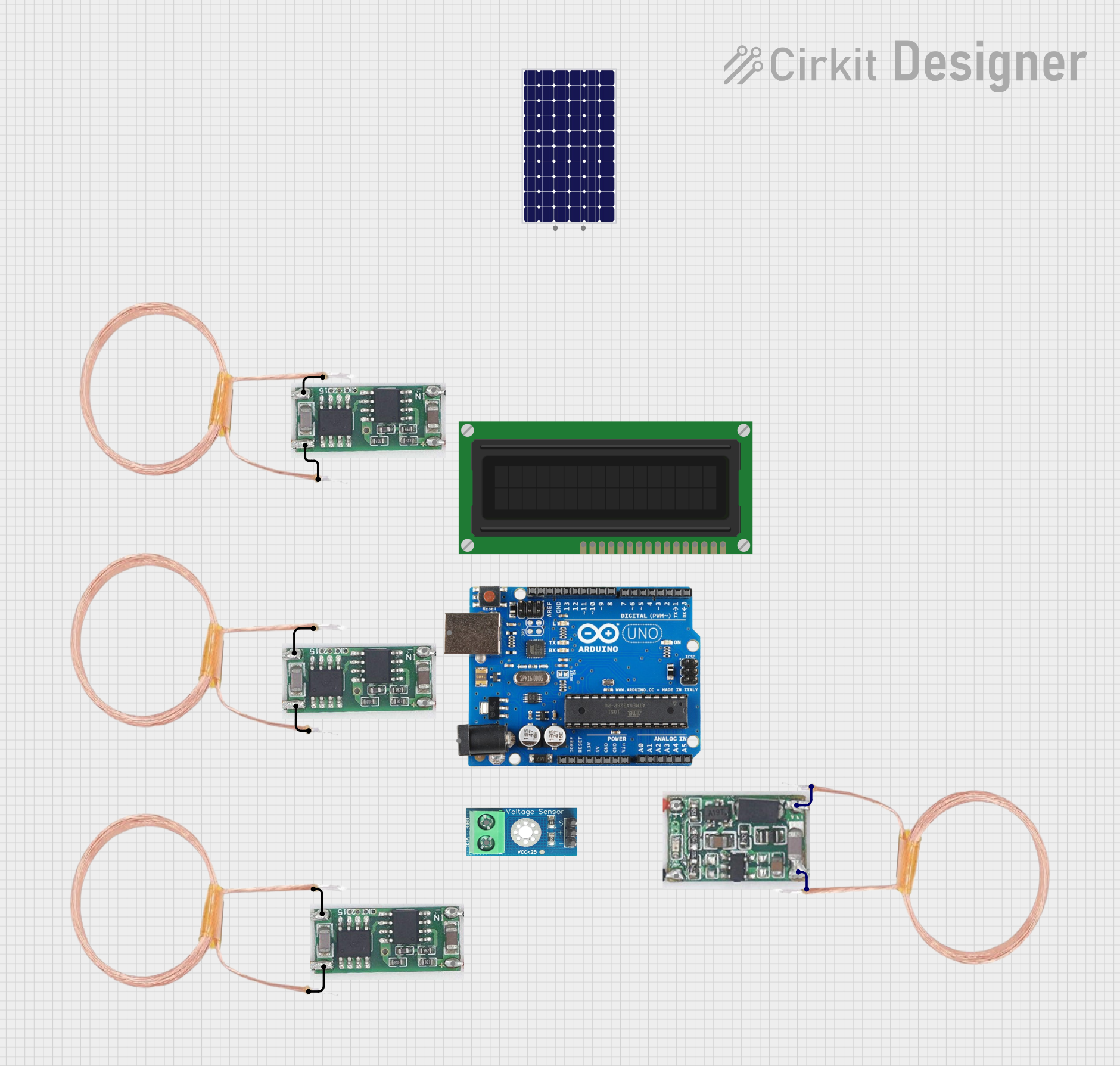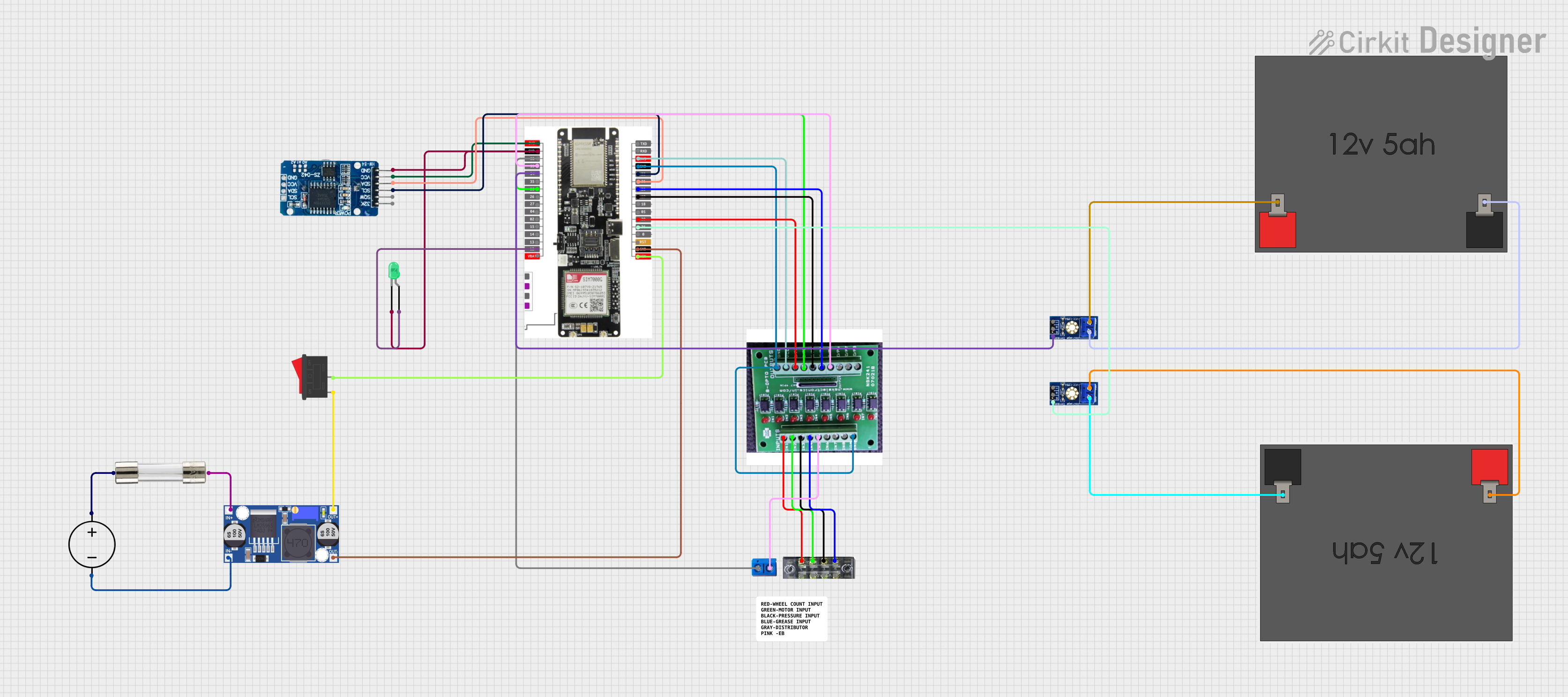
How to Use relay tomzn toct 1-25: Examples, Pinouts, and Specs

 Design with relay tomzn toct 1-25 in Cirkit Designer
Design with relay tomzn toct 1-25 in Cirkit DesignerIntroduction
The TOMZN TOCT 1-25 is an electromechanical relay designed for switching applications. It operates by using an electromagnetic coil to open or close its internal contacts, enabling control of high-power circuits with low-power signals. This relay is versatile and suitable for a wide range of voltage and current ratings, making it ideal for industrial automation, home appliances, and other electrical control systems.
Explore Projects Built with relay tomzn toct 1-25

 Open Project in Cirkit Designer
Open Project in Cirkit Designer
 Open Project in Cirkit Designer
Open Project in Cirkit Designer
 Open Project in Cirkit Designer
Open Project in Cirkit Designer
 Open Project in Cirkit Designer
Open Project in Cirkit DesignerExplore Projects Built with relay tomzn toct 1-25

 Open Project in Cirkit Designer
Open Project in Cirkit Designer
 Open Project in Cirkit Designer
Open Project in Cirkit Designer
 Open Project in Cirkit Designer
Open Project in Cirkit Designer
 Open Project in Cirkit Designer
Open Project in Cirkit DesignerCommon Applications and Use Cases
- Industrial automation systems
- Home electrical appliances
- Motor control circuits
- Lighting systems
- Power distribution and protection circuits
Technical Specifications
The TOMZN TOCT 1-25 relay is designed to handle moderate to high power loads with reliable performance. Below are its key technical details:
General Specifications
| Parameter | Value |
|---|---|
| Rated Voltage (Coil) | 12V DC / 24V DC / 230V AC |
| Rated Current (Contacts) | Up to 25A |
| Contact Configuration | SPST (Single Pole Single Throw) |
| Operating Temperature | -40°C to +70°C |
| Insulation Resistance | ≥ 100MΩ |
| Dielectric Strength | 2500V AC (coil to contacts) |
| Mounting Type | DIN Rail |
Pin Configuration and Descriptions
The relay typically features a set of terminals for both the coil and the load. Below is the pin configuration:
| Pin Number | Description |
|---|---|
| 1 | Coil Terminal (Positive) |
| 2 | Coil Terminal (Negative) |
| 3 | Common Contact (COM) |
| 4 | Normally Open Contact (NO) |
Usage Instructions
How to Use the Relay in a Circuit
- Power the Coil: Connect the coil terminals (pins 1 and 2) to the appropriate voltage source (e.g., 12V DC, 24V DC, or 230V AC, depending on the relay model). Ensure the voltage matches the relay's rated coil voltage.
- Connect the Load: Wire the load circuit to the common (COM) and normally open (NO) terminals (pins 3 and 4). When the coil is energized, the NO contact will close, completing the circuit.
- Control the Coil: Use a low-power control signal (e.g., from a microcontroller or switch) to energize the coil and activate the relay.
Important Considerations and Best Practices
- Voltage Matching: Always ensure the coil voltage matches the relay's rated voltage to avoid damage.
- Current Rating: Do not exceed the relay's maximum current rating (25A) to prevent overheating or failure.
- Flyback Diode: When using a DC coil, add a flyback diode across the coil terminals to protect the control circuit from voltage spikes.
- Secure Mounting: Use a DIN rail for secure and stable mounting in industrial or home setups.
- Isolation: Ensure proper electrical isolation between the control and load circuits to prevent interference or damage.
Example: Using the Relay with an Arduino UNO
Below is an example of how to control the TOMZN TOCT 1-25 relay using an Arduino UNO:
// Define the pin connected to the relay's coil
const int relayPin = 7;
void setup() {
// Set the relay pin as an output
pinMode(relayPin, OUTPUT);
// Ensure the relay is off at startup
digitalWrite(relayPin, LOW);
}
void loop() {
// Turn the relay on
digitalWrite(relayPin, HIGH);
delay(5000); // Keep the relay on for 5 seconds
// Turn the relay off
digitalWrite(relayPin, LOW);
delay(5000); // Keep the relay off for 5 seconds
}
Note: Use a transistor or relay driver module to interface the Arduino with the relay, as the Arduino's GPIO pins cannot directly supply the required current for the relay coil.
Troubleshooting and FAQs
Common Issues and Solutions
Relay Not Activating:
- Cause: Incorrect coil voltage or insufficient current.
- Solution: Verify the coil voltage and ensure the power supply can provide adequate current.
Contacts Not Switching:
- Cause: Faulty wiring or damaged contacts.
- Solution: Check the wiring and inspect the relay for physical damage.
Excessive Heating:
- Cause: Overloading the relay beyond its rated current.
- Solution: Ensure the load current does not exceed 25A. Use a relay with a higher current rating if necessary.
Noise or Chattering:
- Cause: Unstable control signal or insufficient coil voltage.
- Solution: Stabilize the control signal and verify the power supply voltage.
FAQs
Q1: Can I use the relay with an AC load?
Yes, the TOMZN TOCT 1-25 relay can switch both AC and DC loads, provided the load voltage and current are within the relay's rated specifications.
Q2: Do I need a heatsink for the relay?
No, a heatsink is not required for this relay. However, ensure proper ventilation to prevent overheating during prolonged use.
Q3: Can I use this relay for motor control?
Yes, the relay is suitable for motor control applications, but ensure the motor's starting current does not exceed the relay's maximum current rating.
Q4: How do I know if the relay is working?
You can hear a clicking sound when the relay switches. Additionally, you can measure continuity between the COM and NO terminals to confirm operation.